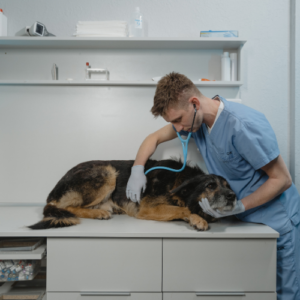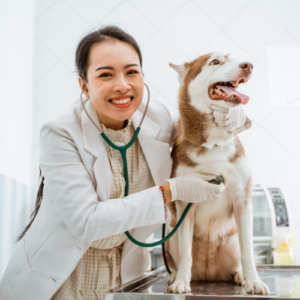Jaundice in Dogs
Is your furry friend displaying yellowish skin or eyes? It could be a sign of jaundice, a condition that affects dogs just like humans. Understanding the causes, symptoms, and treatment options for jaundice in dogs is crucial for their overall health and well-being.
Jaundice in dogs, also known as icterus, occurs when there is a buildup of bilirubin, a yellow pigment, in their bloodstream. This can happen due to various underlying conditions such as liver disease, pancreatitis, or hepatitis. It’s important to note that jaundice itself is not a disease, but rather a symptom of an underlying problem.
What is Jaundice in Dogs?
Jaundice is a condition characterized by the yellowing of the skin, eyes, and mucous membranes in dogs. This yellow discoloration is caused by the accumulation of bilirubin, a yellow pigment, in the bloodstream. Bilirubin is a byproduct of the breakdown of red blood cells and is normally processed by the liver before being excreted through bile.
When the liver is unable to process bilirubin efficiently, it builds up in the bloodstream, resulting in jaundice. This can occur due to various underlying conditions such as liver disease, pancreatitis, hepatitis, or obstruction of the bile ducts.
Causes of Jaundice in Dogs
Jaundice in dogs can be caused by a wide range of underlying conditions. Liver disease, such as hepatitis or cirrhosis, is one of the most common causes of jaundice. It can be caused by infections, toxins, autoimmune disorders, or certain medications.
Pancreatitis, inflammation of the pancreas, can also lead to jaundice in dogs. This condition can be caused by dietary indiscretion, obesity, or certain medications. Additionally, obstruction of the bile ducts, either due to gallstones or tumors, can prevent the proper flow of bile and result in jaundice.
Other potential causes of jaundice in dogs include certain infections, such as leptospirosis or babesiosis, as well as certain types of cancer, such as liver cancer or hemangiosarcoma.
Symptoms of Jaundice in Dogs
Identifying jaundice in dogs can be challenging as its symptoms are often subtle. However, there are certain signs that you can watch out for. The most noticeable symptom of jaundice is the yellowing of the whites of the eyes, gums, and skin. This yellow discoloration is a result of the accumulation of bilirubin in the body.
In addition to the yellowing, dogs with jaundice may also exhibit other symptoms such as dark urine, which is a result of the excess bilirubin being excreted through the kidneys. Loss of appetite and lethargy are also common signs to watch out for. These symptoms may vary depending on the underlying cause of jaundice.
It’s important to note that jaundice is not a disease in itself, but rather a symptom of an underlying problem. Therefore, it’s crucial to consult your veterinarian if you notice any of these symptoms in your dog. Prompt medical attention can help identify the root cause of jaundice and provide appropriate treatment, improving your dog’s quality of life.

Diagnosing Jaundice in Dogs
When it comes to diagnosing jaundice in dogs, a thorough examination and diagnostic tests are necessary. Your veterinarian will start by taking a detailed history and conducting a physical examination of your dog. They will look for signs of jaundice, such as yellowing of the eyes, gums, and skin.
To determine the underlying cause of jaundice, your veterinarian may recommend blood tests to evaluate liver function, assess red blood cell count, and measure bilirubin levels. They may also perform imaging tests, such as ultrasound or X-rays, to visualize the liver and bile ducts for any abnormalities.
In some cases, a liver biopsy or fine needle aspirate may be necessary to obtain a sample of liver tissue for further analysis. These tests can help determine the specific cause of jaundice and guide the appropriate treatment plan.
Treatment Options for Jaundice in Dogs
The treatment for jaundice in dogs depends on the underlying cause. Once the cause has been identified, your veterinarian will develop a treatment plan tailored to your dog’s specific needs.
In cases where liver disease is the underlying cause of jaundice, treatment may involve medications to support liver function, dietary changes to reduce the workload on the liver, and management of any concurrent conditions, such as infections or inflammation.
If pancreatitis is the underlying cause, treatment may include dietary modifications, medications to reduce inflammation and pain, and management of any complications, such as secondary infections.
In cases where obstruction of the bile ducts is causing jaundice, surgery may be necessary to remove gallstones or tumors and restore the flow of bile.
It’s important to follow your veterinarian’s instructions closely and attend regular follow-up appointments to monitor your dog’s progress. In some cases, lifelong management may be necessary to maintain your dog’s liver health and prevent the recurrence of jaundice.
Home Remedies for Jaundice in Dogs
While there are no specific home remedies for jaundice in dogs, there are certain measures you can take to support your dog’s overall health and well-being.
Providing a balanced and nutritious diet is essential for dogs with jaundice. Your veterinarian may recommend a special diet that is easy to digest and supports liver function. It’s important to follow their dietary recommendations and avoid feeding your dog any foods that may worsen their condition.
Regular exercise is also beneficial for dogs with jaundice. Exercise helps improve blood circulation and promotes overall liver health. However, it’s important to consult your veterinarian before starting any exercise regimen to ensure it is safe for your dog’s specific condition.
Additionally, it’s crucial to ensure your dog has access to clean and fresh water at all times. Proper hydration is important for supporting liver function and aiding in the elimination of toxins from the body.

Preventing Jaundice in Dogs
Preventing jaundice in dogs involves maintaining their overall health and well-being. Here are some measures you can take to reduce the risk of jaundice:
-
- Vaccinate your dog regularly to protect against infectious diseases that can cause jaundice.
-
- Practice good hygiene and avoid exposing your dog to environments where they may come into contact with infectious agents.
-
- Provide a balanced and nutritious diet to support your dog’s liver health.
-
- Avoid giving your dog any medications or supplements without consulting your veterinarian first, as some substances can be toxic to the liver.
-
- Keep your dog at a healthy weight to reduce the risk of obesity-related conditions, such as pancreatitis.
-
- Regularly monitor your dog’s behavior and appearance for any signs of illness, including jaundice. Prompt veterinary attention can help identify and treat any underlying conditions before they progress to jaundice.
By following these preventive measures and maintaining regular veterinary care, you can help reduce the risk of jaundice in your dog and ensure their overall well-being.
When to See a Veterinarian for Jaundice in Dogs
If you notice any symptoms of jaundice in your dog, it’s crucial to consult your veterinarian as soon as possible. Jaundice is a sign of an underlying problem that requires medical attention. Your veterinarian will be able to perform a thorough examination and diagnostic tests to determine the cause of jaundice and develop an appropriate treatment plan.
Early intervention is key in managing jaundice and improving your dog’s prognosis. Ignoring the symptoms or delaying veterinary care can lead to further complications and worsen your dog’s condition.
Common Misconceptions about Jaundice in Dogs
There are several common misconceptions about jaundice in dogs that need to be clarified. One common misconception is that jaundice is a disease in itself. In reality, jaundice is a symptom of an underlying problem, such as liver disease, pancreatitis, or obstruction of the bile ducts.
Another misconception is that jaundice is always a sign of a serious or life-threatening condition. While jaundice can be a symptom of serious conditions, it can also occur due to less severe conditions, such as certain infections or medication side effects. It’s important to consult your veterinarian for an accurate diagnosis and appropriate treatment.
Lastly, some people believe that jaundice in dogs can be treated with over-the-counter medications or home remedies. However, jaundice requires proper diagnosis and treatment by a veterinarian. Home remedies or self-medication can worsen the underlying condition and delay necessary medical intervention.

Conclusion
Jaundice in dogs is a condition characterized by the yellowing of the skin, eyes, and mucous membranes. It is caused by the buildup of bilirubin in the bloodstream, which can occur due to various underlying conditions such as liver disease, pancreatitis, or obstruction of the bile ducts.
Identifying jaundice in dogs can be challenging as its symptoms are often subtle. Yellowing of the eyes, gums, and skin, dark urine, loss of appetite, and lethargy are common signs to watch out for. If you notice any of these symptoms, it’s crucial to consult your veterinarian for a proper diagnosis and treatment plan.
Diagnosing jaundice in dogs requires a thorough examination and diagnostic tests. Treatment options depend on the underlying cause of jaundice and may include medications, dietary changes, and, in some cases, surgery.
While there are no specific home remedies for jaundice in dogs, providing a balanced diet, regular exercise, and ensuring proper hydration can support your dog’s overall health and well-being.
Preventing jaundice in dogs involves maintaining their overall health, practicing good hygiene, and regular veterinary care. By following these preventive measures and seeking prompt veterinary attention when needed, you can help ensure your dog’s well-being and reduce the risk of jaundice.
Remember, accurate diagnosis and timely intervention are key in managing jaundice in dogs and ensuring their overall well-being.
